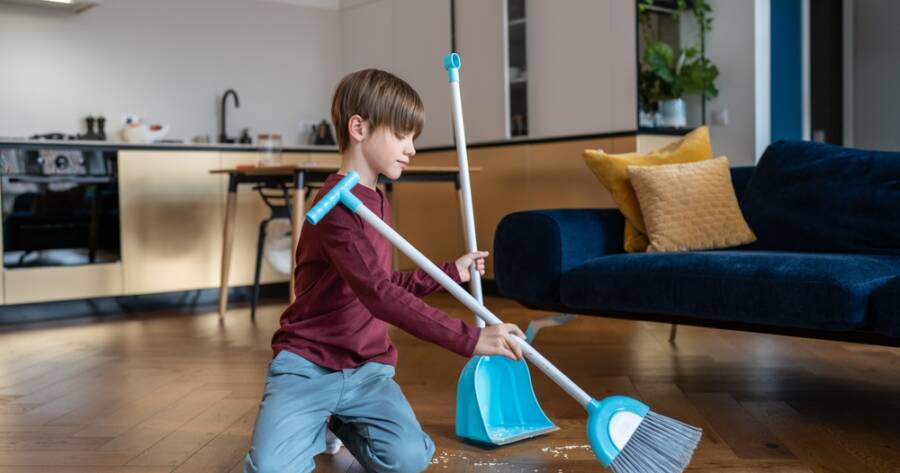Dividing chores fairly is one of the biggest challenges in many U.S. households. Whether it’s between spouses, kids, or roommates, shared spaces often lead to shared stress. That’s where chore zoning comes in — a simple system that turns conflict into cooperation by assigning responsibility by area instead of task. With the right tools, routines, and mindset, families can turn household management into a smoother, more respectful process — and even build stronger habits along the way.
What Is Chore Zoning?
Chore zoning is the practice of dividing a home into “zones” and assigning each person responsibility for a particular area. Instead of everyone fighting over who’s supposed to do the dishes or clean the bathroom, each person knows what part of the home they’re in charge of — and for how long.
This method reduces micromanagement and avoids vague instructions. For example, instead of telling a teen to “clean up more,” they might be assigned the entryway and laundry zone, with clear expectations for what that includes. One person may oversee the kitchen, while another is responsible for the family room or yard.
Zoning also makes it easier to rotate responsibilities, check progress, and teach independence. Kids, especially, thrive on clear structure — and adults benefit from fewer reminders and less resentment.
Tools That Make Zoning Easier to Manage
To make chore zoning successful, you need systems in place that everyone can see and understand. One of the simplest tools is a zone chart, either printed on paper or displayed on a whiteboard. It shows who is responsible for each space and what “done” looks like for that area.
Magnetic chore boards are also popular. These let you visually assign zones with labeled magnets that can be moved week to week. Dry erase calendars with color-coded markers work well for families who want to layer on daily or weekly tasks.
Apps like OurHome, Tody, or Cozi offer digital options where users can check off tasks, set timers, and even earn rewards or points. While screens aren’t required for zoning to work, some families enjoy the added motivation and shared access that apps provide.
The most important tool? A shared understanding. Sit down together and talk through expectations before assigning zones. This keeps everyone on the same page and reduces future conflicts about what counts as “clean.”
Tailoring Zones to Ages and Abilities
One of the strengths of the chore zoning system is how easily it can be adapted to different family dynamics. Small children can handle simpler zones like toy pickup in the living room or organizing their shoes near the door. Older kids can take on bathrooms, vacuuming, or tidying shared spaces. Adults may rotate through zones that require more detail or deeper cleaning, such as the kitchen or garage.
Chore zoning also empowers children to take ownership of their space. Instead of seeing chores as random punishment, they begin to view their zone as something they care for and maintain. This promotes responsibility and pride in their work — and cuts down on nagging.
Don’t be afraid to experiment with rotating zones weekly or monthly. Switching roles keeps things fresh and helps everyone learn different skills. Some families even use a “zone draft” where everyone picks their top choice — creating a sense of fairness and fun in the process.
How to Prevent Conflict and Build Routine
Even the best systems can fall apart without support. To keep chore zoning running smoothly, consistency and communication are key. Begin with a family meeting to set up the first round of zones and expectations. Be specific. Saying “keep it clean” is vague — saying “wipe counters daily, vacuum once a week, and put items away nightly” is much clearer.
Set a regular time to review progress — like Sunday evenings or Saturday mornings — where everyone checks in and rotates zones if needed. This keeps everyone accountable without pointing fingers.
Consider adding incentives, especially for younger family members. This could be extra screen time, a small treat, or a family reward when everyone completes their zones consistently. While the goal is to build intrinsic motivation, small positive reinforcements help build early habits.
Most importantly, model teamwork and flexibility. If someone is sick or busy, step in without blame. Encourage helping hands, not just rule-following. Chore zoning is about building cooperation, not enforcing rigid rules.
Divide the Work, Multiply the Peace
Chore zoning brings clarity, structure, and shared ownership to household work. Instead of vague tasks and constant reminders, everyone knows their space and their role. With the help of visual charts, fair rotation, and age-appropriate assignments, families can reduce tension and increase teamwork.
Most importantly, chore zoning teaches long-term skills — not just how to clean, but how to contribute. When each person has a defined place to care for, the home becomes not just cleaner, but calmer and more connected.

